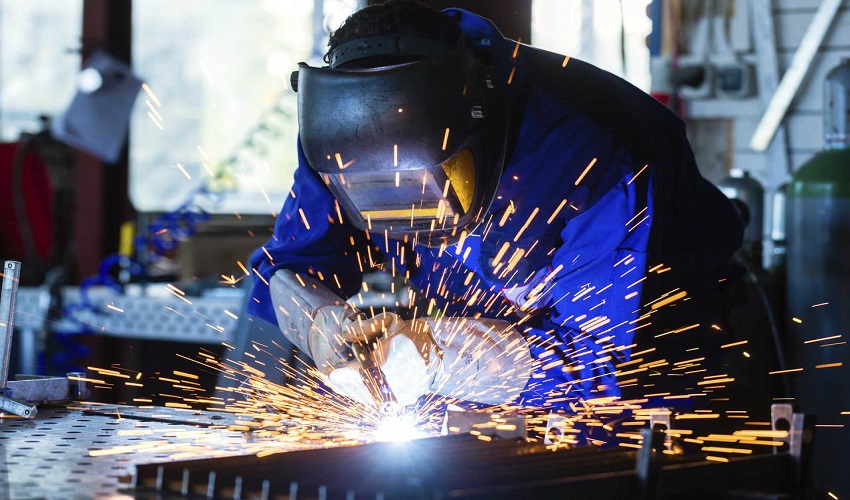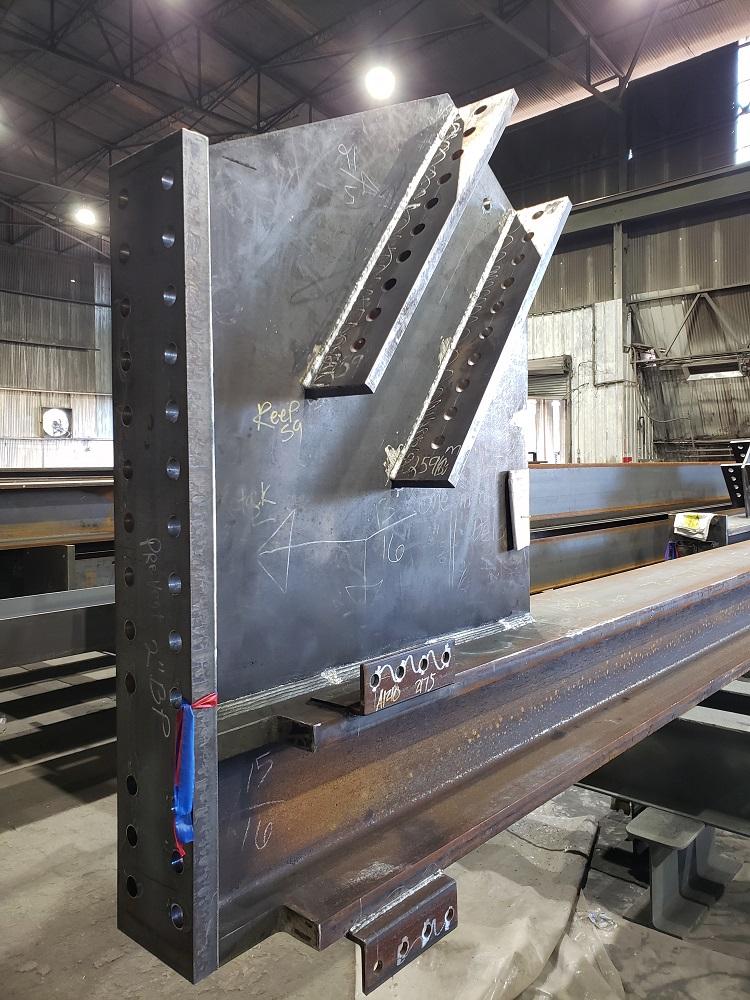Cutting-edge Fads in Steel Fabrication: Enhancing Durability and Precision
In the world of steel manufacture, the search of toughness and precision has actually led to a wave of cutting-edge fads that are improving the sector. From innovations in welding innovations to the integration of robotic automation in fabrication processes, the landscape of steel production is advancing quickly. High-strength alloy advancement, combined with the application of 3D modeling and simulation software program, is pressing the boundaries of what is achievable in terms of structural stability and accuracy. The expanding emphasis on sustainable methods in steel manufacturing is not just driving efficiency yet also promoting an extra environmentally aware approach to manufacture. These trends are not simply forming today however also laying the foundation for the future of steel construction, promising more improvements in sturdiness and accuracy.
Advanced Welding Technologies
In the realm of steel construction, the adoption of advanced welding technologies has dramatically reinvented the market's strategy to accomplishing remarkable high quality and precision in structural welds. Advanced welding technologies, such as laser light beam welding and friction mix welding, have emerged as game-changers in the field. Laser beam welding utilizes a concentrated laser beam to join metal components with exceptional accuracy and rate, making it optimal for complex styles and thin materials. On the various other hand, friction stir welding creates exceptionally solid bonds by mechanically intermixing the molecules of the materials at the joint, getting rid of the requirement for thawing the steel. These modern technologies offer countless advantages, including reduced heat-affected zones, marginal distortion, and enhanced mechanical residential properties in the bonded joints. By leveraging these innovative welding methods, steel producers can elevate the resilience, strength, and precision of their structural welds, fulfilling the increasingly requiring requirements of contemporary construction jobs.
Robot Automation in Fabrication
Accepting robotic automation has come to be a keystone of contemporary steel construction practices, enhancing and simplifying processes efficiency throughout the market. Robots are reinventing the means steel components are manufactured, using unequaled accuracy and rate while lowering human error. These automated systems can handle repetitive tasks with regular accuracy, causing better output.
One key advantage of robotic automation in steel fabrication is the capacity to function around the clock without exhaustion, significantly boosting production outcome. This continual procedure decreases downtime and speeds up task timelines, inevitably conserving expenses for makers. Additionally, robots can be set to execute elaborate tasks that might be difficult or dangerous for human workers, boosting safety in the office.
Furthermore, robotic automation makes it possible for smooth integration with other digital innovations, such as computer-aided style (CAD) software application and Web of Points (IoT) systems (metal fabrication melbourne). This interconnected method boosts interaction between different phases of manufacture, optimizing workflows and making certain real-time surveillance and control. As the steel fabrication sector remains to progress, robotic automation stands out as a transformative pressure driving effectiveness and precision in producing processes

High-Strength Alloy Growth
The advancement of high-strength alloy development in steel fabrication is reshaping the industry's technique to enhancing material resilience and performance. High-strength alloys are crafted to display remarkable mechanical properties, such as boosted tensile stamina, durability, and deterioration resistance contrasted to traditional steel qualities. By including these innovative alloys right into manufacture processes, suppliers can produce parts that endure higher stress and anxiety levels and severe atmospheres, bring about even more long lasting and trustworthy end products.
One secret benefit of high-strength alloy growth is the capacity to minimize product thickness without compromising structural stability. This not only results in lighter-weight components yet also adds to set you back savings and boosted performance in fabrication and assembly processes. In addition, the boosted strength-to-weight ratio of these alloys enables the layout and building of structures with greater load-bearing capacities while reducing overall weight.
3D Modeling and Simulation Software Application
Innovations in steel fabrication procedures have been dramatically moved by the combination of innovative 3D modeling and simulation software program tools. These devices allow makers to produce detailed virtual versions of their tasks, enabling them to visualize the last item with precision before any kind of physical work starts.

Lasting Practices in Steel Production
Integrating lasting techniques into steel production procedures is essential for reducing ecological impact and ensuring long-term source availability. One essential sustainable practice is the adoption of energy-efficient modern technologies to reduce greenhouse gas discharges during the steel manufacturing process. This includes using renewable resource sources, such as solar or wind power, to power steel plants and carrying out energy-efficient equipment to maximize power use.
Another essential element of sustainable steel manufacturing is the accountable sourcing of resources. This includes making sure that the iron ore and various other sources used in steelmaking are gotten from eco pleasant and honest resources. By promoting transparency in the supply chain and adhering to strict ecological standards, steel makers can reduce the negative effects of resource extraction on local ecosystems and neighborhoods.

Conclusion
In final thought, the ingenious trends in steel construction such as sophisticated welding technologies, robotic automation, high-strength alloy advancement, 3D modeling and simulation software application, and sustainable practices are boosting the toughness and precision of steel items. These developments are revolutionizing the steel manufacture sector by boosting top quality, performance, and sustainability. It is clear that the future of steel fabrication hinges on embracing these cutting-edge technologies to meet the needs of contemporary construction and production markets.
In the world of steel manufacture, the pursuit of longevity and precision has actually led to a wave of ingenious patterns that are improving the market.In the world of steel fabrication, the fostering of sophisticated welding innovations has considerably revolutionized the industry's strategy to achieving exceptional high quality and precision in structural welds. As the steel construction industry proceeds to evolve, robotic automation stands out as a transformative pressure driving efficiency and accuracy in manufacturing processes.
In addition, reusing and reusing steel scrap and waste materials play a substantial duty in enhancing the sustainability of steel manufacturing. steel fabricators melbourne.In verdict, the cutting-edge patterns in steel fabrication such as advanced welding modern technologies, robotic automation, high-strength alloy development, 3D modeling and steel fabricators melbourne simulation software program, and lasting methods are enhancing the toughness and precision of steel products